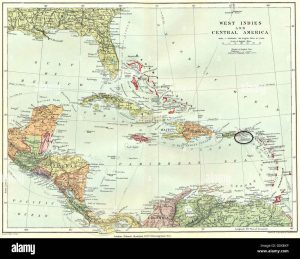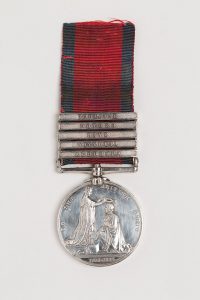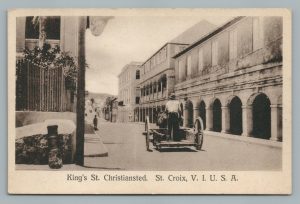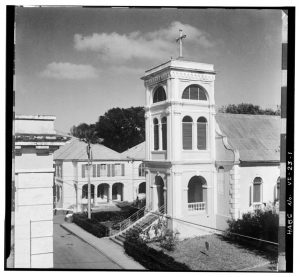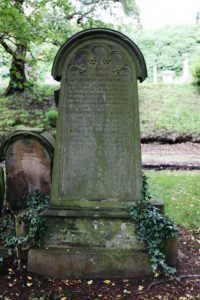Lt George Gordon 1793 to 1861
By Keith Clark and Morag Fyfe
The 42nd (Highland) Regiment of Foot, also called the Black Watch, suffered significant losses at the Battle of Toulouse on 10 April 1814. An eyewitness account of that day describes the situation in mid-battle
“Out of about 500 men, which the Forty-second brought into action, scarcely 90 reached the fatal redoubt from which the enemy had fled. ….Two officers and about 60 of inferior rank were all that now remained without a wound of the right wing of the regiment that entered the field in the morning. The flag was hanging in tatters, and stained with the blood of those who had fallen over it”[i]
Lieutenant George Gordon was one of that Highland regiment who survived the battle. When British officers were ordered to leave Toulouse by 19 June of that year, it would be the last action this native of St. Croix in the Danish West Indies would see with the 42nd.
The path that led George Gordon from St. Croix to the Peninsular War is not clear but some things are known. George was born to Dr. John Gordon MD and his wife Sarah Towers in 1793 in at St Croix of in the Danish West Indies. His father was the physician to the King of Denmark for the Danish West Indies and there are indications that he had house slaves while living in St. Croix. In all likelihood George and his older sister Sarah grew up in the town of Christiansted. His family was financially secure as his paternal grandfather (George Gordon MD) had a major interest in the Sevilla sugar plantation in Trinidad that was doing well. When George’s grandfather died in the 1790’s his estate was distributed with his family getting some interest in the plantation.
George’s father died in England on 30 Jan 1807 at age 57 and was buried in Bath Abbey there on 5 Feb 1807. It is not known when his mother died. Upon his father’s passing, George appears to have inherited a share in his Grandfather’s Trinidadian sugar plantation with his Uncle Cosmo Gordon and others.
At age 19, George purchased the rank of Ensign in the 42nd Highland Regiment, on 25 February 1812. At this time, both the 1st and 2nd battalions of the 42nd were part of Wellington’s army that was engaged in Portugal and Spain against France. George probably joined his regiment in the campaign in the Peninsula between Wellington’s withdrawal to Portugal in late October 1812 and the beginning of fresh advances against the French in Spain starting in 1813. That May, the 42nd advanced with Wellington’s army driving the French out of Madrid, taking Burgos and then being held in reserve at the battle of Vittoria. The battles then turned from being fought on Spanish soil to engagements in France. On 10 November 1813 Ensign George Gordon took part in the Battle of Nivelle. Heavy rains occurred over the next few days, and it was not until 9 December 1813 that Wellington was able to continue his attack on the French who were now at the river Nive. Although George took part in the initial attack of this battle, the 42nd did not take any further role in the battle which ended on 13 December 1813.
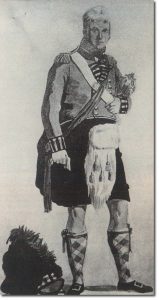
Major Robert Anstruther of the 42nd in 1812 showing the officers’ uniform of the period. It seems unlikely that officers who had been serving in the Peninsula for several years would be able to keep their uniforms looking so smart.
Following these two battles, the 42nd established a camp near Villafranca in northern Spain. Here the regiment built huts and rested. It was reported that some of the officers gave up their quarters to some of the married women that travelled with the regiment, and it would be interesting to know if young and single George was one of these officers. Morale remained good at the camp as the thought of handing Napoleon further defeats was in the offering. The 42nd remained near Villafranca for over two months and it was during this time that George was promoted to the rank of Lieutenant.
At the end of February 1814 Wellington resumed the Peninsula campaign and advanced on the French position near Orthes. The morning of 27 February 1814 saw a light frost and George advanced with the 42nd to attack the center of the French line. They captured the small village of Sallespisse cutting off one of French retreat routes.
Wellington followed the retreating French army and George’s regiment continued into France reaching the outskirts of Toulouse by 4 April 1814. On 10 April 1814 the Battle of Toulouse began. George’s regiment was to lead the attack on the enemy redoubts protecting the city. The battle 21-year-old George engaged in was fierce and bloody with the regiment incurring the heaviest loss of any regiment with 27 officers and 406 men killed and wounded. On the morning of 12 April 1814, city officials surrendered Toulouse to the Allied army. That same afternoon Wellington received the news that Napoleon had abdicated and peace was at hand.
George returned with his regiment to Ireland at the end of the war in 1814 and the 2nd Battalion, of which he was an officer, was disbanded later that year in Aberdeen. In October 1814, George was placed on half-pay and was not called to return duty until after the Battle of Waterloo.
The Military General Service Medal (MGSM) for service in the Peninsula and at Waterloo was authorized by a General Order dated 1st June, 1847 and issued in 1848. The medal was only awarded to surviving claimants; one had both to have survived until 1847 and then to actively apply for it. However it is not known if George claimed it; he was eligible for it and would have been entitled to clasps for the battles of Nivelle, Nive, Orthez and Toulouse.
When the regiment returned home after the Battles of Quatre Bras and Waterloo in June of 1815, George rejoined on full pay on 12 July 1815. Three years later, on 7 Jan 1820, 27-year-old Lt. George Gordon exchanged with Lt James MacDougall of the 85th Regiment of Foot, taking up a half pay commission with the 85th and receiving the difference in the value between the two commissions.
This exchange with MacDougall meant that George now left the 42nd, transferred to the 85th Foot and was entered on their books. He would have been living as a civilian drawing half his army pay and entitled to wear his army uniform.
Upon leaving the 42nd in 1820 George was now freer to pursue his interests. There are records of George Gordon (Army) in transit between St. Croix and Great Britain by way of New York in both 1821 and 1822 but whether he made other visits to St. Croix or lived there for any length of time is unknown.
After the Napoleonic Wars the British Army had a surplus of officers. In order to reduce this number the War Office, in effect, bought back commissions that the officers had previously paid for by offering them an allowance. In July of 1832 the London Gazette announced that Ensign (sic) George Gordon, late on half pay, 42nd Foot was allowed to receive a commuted allowance for his commission. By doing this George surrendered his half-pay commission and received an allowance from the war office instead of selling his commission. This ended George’s military career at age 39.
His movements and places of residence after he left the military are not clear. The St Croix census form of 1833 shows residents living at 42 King St Christiansted, St Croix in a house belonging to George Gordon. The St. Croix property register of 1835 records George Gordon as owning four properties in Christiansted. The same property registers show George Gordon as owning property at 59 King St, Christiansted, St Croix in 1841 and 1846. It is not clear if he resided in these properties at any time or if he simply owned them.
By 1851 George, at age 58, was definitely residing in Scotland, living with his niece Elizabeth Ferguson, the daughter of his sister Sarah, her husband and children at 7 Blythswood Square, Glasgow. His occupation was listed as “late of the army” so it is probable that his sources of income were his military allowance and investments in the West Indies and Trinidad.
George’s interests in the Americas were probably still doing well and provided him with money to live on. He had a share in his grandfather’s sugar plantation in Trinidad – the Sevilla Estate. When slavery was abolished in the British Empire in 1834, the estate claimed compensation for 160 slaves that worked on it. In compensation for their slaves, the Sevilla Estate received £7173 18s 2d (worth about £840,000 in 2021). The estate continued to be operational during George’s life and would have supplied him with a steady income. As well, his property at 59 King Street, Christiansted, St Croix would have provided additional income. In 1857 the register showed five families with a total of twenty people living in the building.
What George did after he retired from the military can only be speculated on. His will bequeathed 10 dollars (10 daler, the St Croix currency of the time) to the Danish Lutheran Church there and at least one of the executors of his will written in 1860 is “of the island of St. Croix”.
An inventory of his holdings after his death shows that he had funds in banks in both St. Thomas and St. Croix. He also owned property in St. Croix at the time of his death as well as holding an interest in the Trinidad sugar plantation of Sevilla. From this it is clear that he maintained ties with his birthplace in the West Indies, but it is not known if he visited St. Croix on any sort of regular or irregular basis.
From his will it may be surmised that he enjoyed hunting and fishing as he left to his nephew his “…guns, fishing rods and tackle…”.
On 31 March 1861, at age 68, George Gordon, survivor of the Peninsular War and the Battle of Toulouse, died of heart disease at his niece’s home at 12 Oakfield Terrace, Glasgow. He is buried in Compartment Petra the Glasgow Necropolis. His niece Elizabeth Stedman Ferguson nee Battelle was buried there eleven years later. George never married.
For ease of reading and in order to minimize the use of end notes in this profile, a category or group of sources will be referenced only once, the first time it is used. Each individual source is annotated so that the reader may associate the reference with facts included in the profile.
The following records, available from the National Records of Scotland were used throughout this profile:
Censuses of Scotland:
- 1851 Parish: Barony; ED: 22B; Page: 23; Line: 6; Roll: CSSCT1851_143; Year: 1851
Statutory Registers:
- 1861 Gordon, George (Statutory registers Deaths 642/2 96)
Wills and Testaments:
- 1861 Gordon, George (Wills and testaments Reference SC36/51/42 Glasgow Sheriff Court Wills)
- 1861 Gordon, George (Wills and testaments Reference SC36/48/47 Glasgow Sheriff Court Inventories)
These records are available at ScotlandsPeople | Connecting Generations
Newspapers have been a valuable source of information about George’s life. Specifically:
- The London Gazette
- 17 August 1813 pages 1637, 1807
- 17 June 1817 page 1366
- 24 July 1832 page 1704
- Edinburgh Gazette
- 14 January 1820
- Glasgow Herald 1 April 1861
Additional miscellaneous resources used in this profile: These varied resources have provided both general background and historical information:
- Registers of Vessels Arriving at the Port of New York from Foreign Ports, 1789 – 1919, Microfilm Publication M237, rolls 1-95, National Archives at Washington, D.C. Database available on-line at Ancestry.
Books used in this profile:
Books have provided some background information on the history of the family as well as a history of the 42nd Regiment at the time George Gordon served in it.
A Short History of The Black Watch (Royal Highlanders) 42nd – 73rd, 1725 – 1907 Arthur Grenfell Wauchope, William Blackwood & Sons, Edinburgh and London, 1908 Available at A short history of the Black Watch (Royal Highlanders); 42nd, 73rd, 1725-1907. To which is added an account of the second battalion in the South African War, 1899-1902: Wauchope, Arthur Grenfell, 1874- : Free Download, Borrow, and Streaming : Internet Archive This book provides a thorough history of this regiment and was used to connect the life of George Gordon with the activities of the regiment.
The Making of the West Indies, The Gordons as Colonists J.M.Bullock, privately printed by W.F.Johnston & Son This volume contains a brief background history of the Gordons on the islands of St. Croix and Trinidad.
Scots in the West Indies, 1707–1857 Dobson, David. n.p.: Clearfield Company, Inc., 1998. This book is indexed on the Ancestry website and is searchable by name. It provides information on births, deaths and marriages of Scottish families in the Caribbean during the year mentioned.
Websites used in this profile:
- Search the records – The Danish West-Indies (virgin-islands-history.org) – provides information on several topics relating to St Croix including census records, records of slaves and property ownership. Many in Danish.
- Details of Estate | Legacies of British Slavery (ucl.ac.uk) – information on the Sevilla Estate in Trinidad
- ABY Name Index Issue 1_0.pdf (batharchives.co.uk) – records of burials at Bath Abbey










